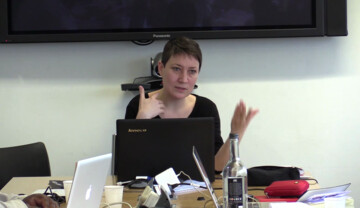The notion of constituencies implies a particular relationship with the art institution. The introduction to the concept in the L’Internationale website argues that constituencies provide the public institutions with the building blocks to re-imagine their role in the production of new forms of citizenship, and also that alter-institutionality is based on a shift away from hierarchical, top-down and ‘broadcast’ based models of knowledge dissemination. We must accept that within this paradigm, constituencies are expected to perform many tasks and produce many effects, that is made productive in many dimensions (cognitive, emotional, corporeal, theoretical, symbolic). Therefore, whenever we discuss constituencies we have to consider their contribution in labour too, both within and outside the institution. This widens the debate beyond merely conceptual discussions that have their origin and rationale in the art institutions themselves, and opens it to the conflictual dialogue with the debates of some of the collectives identified by the museums of l’Internationale as “their” “constituencies”. Introducing the notion of labour new terms and tensions enter the discussion about constituencies such as recognition, autonomy, negotiation, collaboration, retribution, distribution, money, exploitation, (mis)use, etc. (Note that these concepts can work both ways between constituencies and institutions, but almost never are symmetrical).


